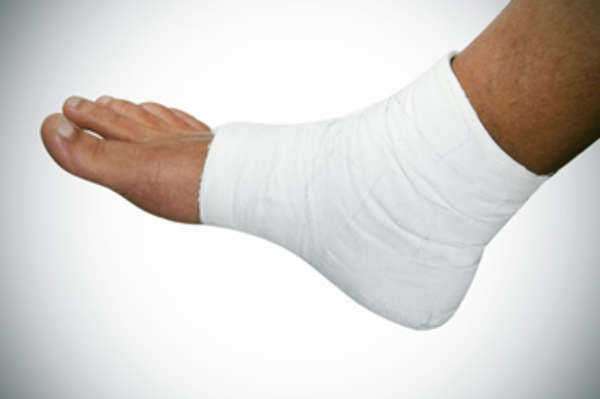
The Proximate Cause of an Injury: Understanding the Concept
Imagine you were walking down the street and suddenly, you fall into a pothole. The pain is excruciating, and you are rushed to the hospital. In such a situation, you might wonder what caused your injury. By definition, the proximate cause of an injury refers to the cause that immediately precedes an injury and ultimately leads to it. In simpler terms, it is the cause-and-effect relationship between the injury and the event that caused it.
In law, the concept of proximate cause is crucial in determining liability. It is used to determine whether an individual or entity should be held responsible for an injury. In this article, we will explore the concept of proximate cause in more detail.
Understanding the Elements of Proximate Cause
To understand proximate cause, you first need to understand the elements that are required to prove it. These elements include:
1. Duty
The defendant must have owed a legal duty to the plaintiff. For instance, a driver has a duty of care to other road users.
2. Breach of duty
The defendant must have breached the legal duty they owed to the plaintiff. For example, a driver who runs a red light breaches their duty of care to other drivers on the road.
3. Causation
The plaintiff must prove that the defendant’s breach of duty caused their injury.
4. Damages
The plaintiff must have suffered actual damages or injuries as a result of the defendant’s breach of duty.
The Importance of Proximate Cause in Legal Matters
Proximate cause is a fundamental concept in tort law. Tort law concerns itself with the rights and obligations of individuals and entities in civil disputes. For instance, if a driver causes an accident, the injured party can file a lawsuit to seek compensation for their injuries.
Proximate cause is important in such disputes because it helps to establish fault. A plaintiff must prove that the defendant’s actions were the direct cause of their injury. Without proximate cause, it would be difficult to hold individuals or entities liable for their actions.
Proximate Cause in Action: Examples
Let’s look at some examples of proximate cause in action:
1. Slip and Fall
If you slip and fall on a wet floor in a grocery store, the proximate cause of your injury would be the wet floor. However, the store might not be liable if they took reasonable steps to prevent the hazard. For instance, if the store had put up warning signs or placed mats throughout the store, they might not be held responsible for your injury.
2. Car Accident
In a car accident, the proximate cause of your injury might be the other driver’s negligence. For example, if the other driver ran a red light and hit your car, they would be held responsible for your injury if it can be established that their actions caused your injury.
3. Product Liability
In product liability cases, the proximate cause of your injury might be a defect in the product. For example, if you were injured by a faulty airbag in your car, the manufacturer of the airbag might be held responsible for your injuries if their product was defective.
Proximate Cause vs. Cause-in-Fact
It is essential to distinguish between proximate cause and cause-in-fact. Cause-in-fact refers to the actual cause of an injury. For instance, if a faulty electrical wire caused a fire that led to a person’s injury, the faulty wire is the cause-in-fact.
On the other hand, proximate cause refers to the legal concept that links the cause-in-fact to the injury. In other words, proximate cause is the legal cause of the injury.
Proximate Cause and Foreseeability
In determining proximate cause, the concept of foreseeability is essential. Foreseeability refers to the ability to anticipate or predict an event’s occurrence. In other words, if an injury was foreseeable, the defendant should have taken steps to prevent it.
For instance, in a slip-and-fall case, if a store manager knew about a spill but failed to clean it up, they could be held liable. The store manager knew that a slip-and-fall injury was foreseeable, yet they failed to take preventive measures.
Proximate Cause and Contributory Negligence
Contributory negligence refers to the concept that the plaintiff’s negligence contributed to their injury. In cases where contributory negligence is present, the plaintiff’s damages might be reduced or eliminated altogether.
For example, if you were injured in a car accident but were not wearing your seatbelt, your damages might be reduced because your contributory negligence contributed to the severity of your injuries.
Conclusion
In conclusion, the proximate cause of an injury is a critical concept in law. It forms the basis for determining liability in civil disputes. In establishing a proximate cause, certain elements must be proven, including duty, breach of duty, causation, and damages. Understanding proximate cause is crucial when seeking compensation for injuries or defending against claims of liability. By appreciating this concept, it is possible to ensure that individuals and entities are held responsible for their actions and that justice is served.
The personal injuries which are dealt with in torts can occur through the direct willfulness or negligence of the defendant. It may also be the case that there is a proximate cause for the injury experienced by the plaintiff. In some cases, the person who enacts the proximate cause also takes on what is known as vicarious liability for the eventual suffering of injury.
The laws governing malpractice and assorted other medical misdoings, for instance, have allowed for vicarious liability to be applied to physicians and administrators without any direct involvement in or responsibility for the botched medical operation in question. The understanding of proximate cause does not, however, provide for its unlimited application to the individuals who made have had some casual relationship to the occurrence of an accident, but requires that some degree of negligence or formally assumed responsibility is present in the defendant.
The theory concerning proximate cause and vicarious liability refers to the chain of events which precedes the infliction of any form of injury. A person may play some role in starting such a chain of events without which, it can later be proved, an accident would not have occurred, without being found to possess vicarious liability for the eventual ill-effects. The legally relevant proximate cause is the one which should have occurred with the reasonable knowledge that it was reckless and might lead to someone suffering harm. In identifying this state, the law refers to the intervening cause.
This is the occurrence, and possibly the decision, which should have been recognized as directing the chain of events towards the ill-effects suffered by the plaintiff. A tort of negligence is geared not toward establishing culpability but toward gaining financial relief for a person who has, without his/her volition, been confronted with the necessity to pay medical bills and respond to other kinds of financial losses. The proximate cause refers to the person who will be imposed with the burden of making financial restitution.
The operation of the form of proximate cause known as vicarious liability has been observed in particular strength in the field of law concerning malpractice. This principle essentially allows for the owner or operator of a facility, such as a building or an office, in which malpractice is committed to be made liable for compensating the victim, despite not bearing any other kind of responsibility for the incident. The mere act of having rented out an office or portions of office for the giving of medical care is held to be a proximate cause and therefore establish the presence of vicarious liability.
This rule differs from those governing workplace injuries, since it can be used to establish vicarious liability for the actions of people not even employed by the defendant. The doctrine of vicarious liability is therefore considered to be one of the most troubling elements of malpractice law for physicians. Malpractice suits will commonly name the operators of the medical facility in which the incident took place as well as the responsible individual.

















